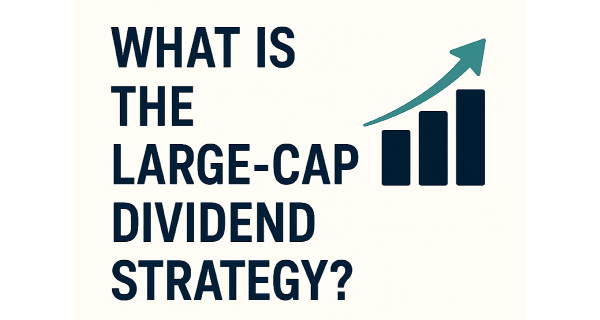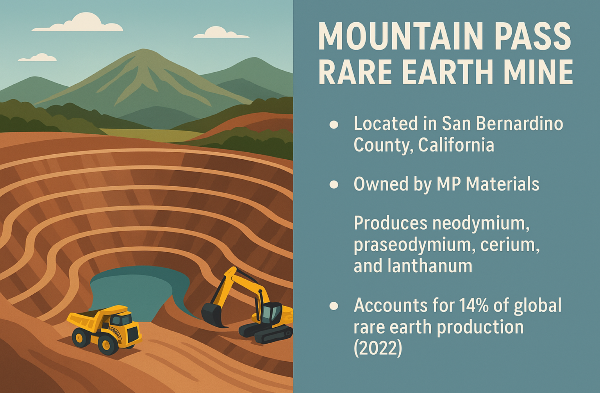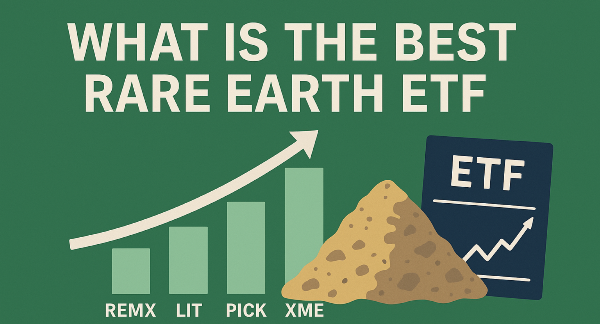Introduction
Large-cap dividend investing focuses on financially stable companies that consistently distribute earnings to shareholders. These companies typically have strong market positions, reliable revenue streams, and a history of returning value to investors through dividends. Dividends play a vital role in wealth-building strategies by providing passive income and enabling reinvestment for long-term growth. Many investors favor large-cap dividend stocks for their ability to generate steady returns while offering lower volatility compared to smaller stocks.
Understanding Large-Cap Dividend Strategy
Large-cap stocks refer to companies with a market capitalization of $10 billion or more. These firms are typically well-established, financially stable, and often industry leaders. Dividend investing involves purchasing stocks that regularly distribute a portion of their earnings to shareholders. Many large-cap companies prioritize dividend payments, making them attractive to investors seeking consistent income. These stocks are commonly found in major indexes such as the S&P 500 and Dow Jones Industrial Average, reinforcing their significance in the market.
Companies that pay dividends often share key characteristics that make them appealing to investors. They tend to have strong revenue streams, consistent profitability, and reputable management teams. Investing in dividend-paying large-cap stocks offers several benefits, including portfolio stability, passive income, and long-term growth potential. Dividend payments can be reinvested to compound returns over time, enhancing overall portfolio performance.
Why Investors Choose Large-Cap Dividend Stocks
Large-cap dividend stocks are known for their stability and lower volatility compared to smaller stocks. These companies typically have diversified revenue streams and established customer bases, which help them withstand economic downturns. Unlike small-cap stocks, which can experience significant price fluctuations, large-cap stocks tend to maintain more predictable performance, making them a preferred choice for conservative investors. Companies that consistently pay dividends provide shareholders with a passive income stream, reducing reliance on stock price appreciation alone. By reinvesting dividends, investors can compound their returns over time, significantly boosting portfolio value.
Criteria for Selecting Large-Cap Dividend Stocks
Dividend yield and payout ratio are crucial factors when selecting large-cap dividend stocks. The dividend yield represents the percentage of a company's share price that is paid out as dividends annually, helping investors assess the return on their investment. The payout ratio, on the other hand, indicates the proportion of earnings distributed as dividends, providing insight into a company's ability to sustain its dividend payments.
Companies with strong balance sheets, positive cash flow, and manageable debt levels are more likely to sustain and grow their dividends over time. Industry trends and economic factors significantly impact dividend payments. Companies operating in stable industries with predictable revenue streams are more likely to offer consistent dividends.
Top Large-Cap Dividend Stocks
Large-cap stocks with strong dividend histories are often favored by investors seeking reliable income. Companies such as Johnson & Johnson, Coca-Cola, and Procter & Gamble have consistently increased their dividend payouts over decades, demonstrating financial stability and shareholder commitment.
These firms belong to the elite group of Dividend Kings, which have raised dividends for at least 50 consecutive years. Companies with strong earnings, positive cash flow, and manageable debt levels are more likely to continue rewarding shareholders. Certain sectors are known for offering high-dividend stocks, including energy, utilities, finance, and consumer staples.
Industry Breakdown of Large-Cap Dividend Stocks
The energy sector is home to several oil and gas companies that consistently provide strong dividend payouts. Companies like ExxonMobil, Chevron, and TotalEnergies have maintained steady earnings and shareholder returns despite market fluctuations. These firms benefit from long-term capital efficiency and strategic investments, ensuring reliable dividend distributions. The financial sector includes banks and insurance firms that offer consistent dividends. Institutions such as JPMorgan Chase, Bank of America, and U.S. Bancorp have historically provided stable dividend payments due to their strong balance sheets and profitability.
Consumer goods companies are known for their reliable dividend payments, as they operate in industries with steady demand. Established brands like Procter & Gamble, Coca-Cola, and PepsiCo have maintained long-term dividend growth, making them attractive to income-focused investors. The healthcare sector features pharmaceutical companies with attractive dividend yields. Firms such as Pfizer, AbbVie, and Johnson & Johnson have a strong history of dividend payments, supported by their robust revenue streams and innovation in medical treatments.
Risks and Considerations in Large-Cap Dividend Investing
Investing in large-cap dividend stocks comes with the risk of potential dividend cuts and financial instability. Companies may reduce or eliminate dividends due to declining earnings, increased debt, or shifting business strategies. Monitoring a company's financial health, including revenue trends and debt levels, can help investors anticipate potential dividend reductions.
Economic downturns can significantly impact dividend payments, as companies often prioritize financial stability over shareholder distributions. Historically, dividend payments have been less volatile than stock prices, but they are still susceptible to economic cycles. Balancing dividend yield with stock price appreciation is crucial for long-term investment success.
Strategies for Investing in Large-Cap Dividend Stocks
Long-term and short-term dividend investing offer distinct advantages depending on an investor’s financial goals. Long-term dividend investing focuses on companies with a history of stable and growing dividend payments, allowing investors to benefit from compounding returns over time. Short-term dividend investing involves purchasing stocks with high yields for immediate returns, often requiring active management to maximize gains. Investors must assess.
Diversification is essential for building an income-focused portfolio that minimizes risk while maximizing returns. Investors can achieve diversification by selecting dividend-paying stocks across various sectors, such as energy, finance, healthcare, and consumer goods. Additionally, incorporating bonds, real estate investment trusts (REITs), and other income-generating assets can further strengthen portfolio resilience. Dividend reinvestment plans (DRIPs) automatically reinvest earnings into additional shares, increasing the overall investment value income.
Case Studies of Successful Large-Cap Dividend Stocks
Several large-cap companies have demonstrated strong dividend growth over the years, making them attractive to income-focused investors. Companies such as MSCI Inc., Hershey, and Procter & Gamble have consistently increased their dividend payouts, reflecting their financial stability and commitment to shareholder returns. These firms have maintained steady earnings growth, allowing them to sustain and expand their dividend distributions. Historical performance and investor returns indicate that dividend-paying stocks can provide long-term stability and wealth accumulation.
Lessons learned from successful dividend investing stories highlight the importance of patience and strategic selection. Investors who focus on companies with sustainable dividend growth, strong balance sheets, and industry leadership often achieve long-term financial success. Case studies of individuals who have built wealth through dividend investing emphasize the value of reinvesting dividends and maintaining a diversified portfolio.
Conclusion
The large-cap dividend strategy provides investors with a stable approach to wealth building through reliable income and long-term growth. By selecting financially sound companies with consistent payouts, investors can mitigate risks and enhance portfolio resilience. Understanding factors such as dividend yield, payout ratios, and market trends helps in making informed decisions while reinvesting dividends amplifies returns. With careful planning and a long-term perspective, this strategy can lead to sustainable financial security and wealth accumulation.




























Introduction
Large-cap dividend investing focuses on financially stable companies that consistently distribute earnings to shareholders. These companies typically have strong market positions, reliable revenue streams, and a history of returning value to investors through dividends. Dividends play a vital role in wealth-building strategies by providing passive income and enabling reinvestment for long-term growth. Many investors favor large-cap dividend stocks for their ability to generate steady returns while offering lower volatility compared to smaller stocks.
Understanding Large-Cap Dividend Strategy
Large-cap stocks refer to companies with a market capitalization of $10 billion or more. These firms are typically well-established, financially stable, and often industry leaders. Dividend investing involves purchasing stocks that regularly distribute a portion of their earnings to shareholders. Many large-cap companies prioritize dividend payments, making them attractive to investors seeking consistent income. These stocks are commonly found in major indexes such as the S&P 500 and Dow Jones Industrial Average, reinforcing their significance in the market.
Companies that pay dividends often share key characteristics that make them appealing to investors. They tend to have strong revenue streams, consistent profitability, and reputable management teams. Investing in dividend-paying large-cap stocks offers several benefits, including portfolio stability, passive income, and long-term growth potential. Dividend payments can be reinvested to compound returns over time, enhancing overall portfolio performance.
Why Investors Choose Large-Cap Dividend Stocks
Large-cap dividend stocks are known for their stability and lower volatility compared to smaller stocks. These companies typically have diversified revenue streams and established customer bases, which help them withstand economic downturns. Unlike small-cap stocks, which can experience significant price fluctuations, large-cap stocks tend to maintain more predictable performance, making them a preferred choice for conservative investors. Companies that consistently pay dividends provide shareholders with a passive income stream, reducing reliance on stock price appreciation alone. By reinvesting dividends, investors can compound their returns over time, significantly boosting portfolio value.
Criteria for Selecting Large-Cap Dividend Stocks
Dividend yield and payout ratio are crucial factors when selecting large-cap dividend stocks. The dividend yield represents the percentage of a company's share price that is paid out as dividends annually, helping investors assess the return on their investment. The payout ratio, on the other hand, indicates the proportion of earnings distributed as dividends, providing insight into a company's ability to sustain its dividend payments.
Companies with strong balance sheets, positive cash flow, and manageable debt levels are more likely to sustain and grow their dividends over time. Industry trends and economic factors significantly impact dividend payments. Companies operating in stable industries with predictable revenue streams are more likely to offer consistent dividends.
Top Large-Cap Dividend Stocks Large-cap stocks with strong dividend histories are often favored by investors seeking reliable income. Companies such as Johnson & Johnson, Coca-Cola, and Procter & Gamble have consistently increased their dividend payouts over decades, demonstrating financial stability and shareholder commitment.
These firms belong to the elite group of Dividend Kings, which have raised dividends for at least 50 consecutive years. Companies with strong earnings, positive cash flow, and manageable debt levels are more likely to continue rewarding shareholders. Certain sectors are known for offering high-dividend stocks, including energy, utilities, finance, and consumer staples.
Industry Breakdown of Large-Cap Dividend Stocks
The energy sector is home to several oil and gas companies that consistently provide strong dividend payouts. Companies like ExxonMobil, Chevron, and TotalEnergies have maintained steady earnings and shareholder returns despite market fluctuations. These firms benefit from long-term capital efficiency and strategic investments, ensuring reliable dividend distributions. The financial sector includes banks and insurance firms that offer consistent dividends. Institutions such as JPMorgan Chase, Bank of America, and U.S. Bancorp have historically provided stable dividend payments due to their strong balance sheets and profitability.
Consumer goods companies are known for their reliable dividend payments, as they operate in industries with steady demand. Established brands like Procter & Gamble, Coca-Cola, and PepsiCo have maintained long-term dividend growth, making them attractive to income-focused investors. The healthcare sector features pharmaceutical companies with attractive dividend yields. Firms such as Pfizer, AbbVie, and Johnson & Johnson have a strong history of dividend payments, supported by their robust revenue streams and innovation in medical treatments.
Risks and Considerations in Large-Cap Dividend Investing
Investing in large-cap dividend stocks comes with the risk of potential dividend cuts and financial instability. Companies may reduce or eliminate dividends due to declining earnings, increased debt, or shifting business strategies. Monitoring a company's financial health, including revenue trends and debt levels, can help investors anticipate potential dividend reductions.
Economic downturns can significantly impact dividend payments, as companies often prioritize financial stability over shareholder distributions. Historically, dividend payments have been less volatile than stock prices, but they are still susceptible to economic cycles. Balancing dividend yield with stock price appreciation is crucial for long-term investment success.
Strategies for Investing in Large-Cap Dividend Stocks
Long-term and short-term dividend investing offer distinct advantages depending on an investor’s financial goals. Long-term dividend investing focuses on companies with a history of stable and growing dividend payments, allowing investors to benefit from compounding returns over time. Short-term dividend investing involves purchasing stocks with high yields for immediate returns, often requiring active management to maximize gains. Investors must assess.
Diversification is essential for building an income-focused portfolio that minimizes risk while maximizing returns. Investors can achieve diversification by selecting dividend-paying stocks across various sectors, such as energy, finance, healthcare, and consumer goods. Additionally, incorporating bonds, real estate investment trusts (REITs), and other income-generating assets can further strengthen portfolio resilience. Dividend reinvestment plans (DRIPs) automatically reinvest earnings into additional shares, increasing the overall investment value income.
Case Studies of Successful Large-Cap Dividend Stocks
Several large-cap companies have demonstrated strong dividend growth over the years, making them attractive to income-focused investors. Companies such as MSCI Inc., Hershey, and Procter & Gamble have consistently increased their dividend payouts, reflecting their financial stability and commitment to shareholder returns. These firms have maintained steady earnings growth, allowing them to sustain and expand their dividend distributions. Historical performance and investor returns indicate that dividend-paying stocks can provide long-term stability and wealth accumulation.
Lessons learned from successful dividend investing stories highlight the importance of patience and strategic selection. Investors who focus on companies with sustainable dividend growth, strong balance sheets, and industry leadership often achieve long-term financial success. Case studies of individuals who have built wealth through dividend investing emphasize the value of reinvesting dividends and maintaining a diversified portfolio.
Conclusion
The large-cap dividend strategy provides investors with a stable approach to wealth building through reliable income and long-term growth. By selecting financially sound companies with consistent payouts, investors can mitigate risks and enhance portfolio resilience. Understanding factors such as dividend yield, payout ratios, and market trends helps in making informed decisions while reinvesting dividends amplifies returns. With careful planning and a long-term perspective, this strategy can lead to sustainable financial security and wealth accumulation.